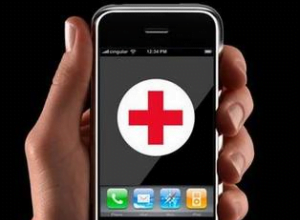What does the word accessible mean to you? You may first think of the word available. Something that is accessible is available, or perhaps within reach for you to use. However, just because something is available doesn’t necessarily mean it is accessible. For instance, if you are hard of hearing or have poor vision, or have a neuromuscular or cognitive disability, some things around you may be available, but hard or impossible for you to use because they are not accessible.
What does the word accessible mean to you? You may first think of the word available. Something that is accessible is available, or perhaps within reach for you to use. However, just because something is available doesn’t necessarily mean it is accessible. For instance, if you are hard of hearing or have poor vision, or have a neuromuscular or cognitive disability, some things around you may be available, but hard or impossible for you to use because they are not accessible. Furthermore, accessibility isn’t just for what you might traditionally think of as “people with disabilities”. For a person who is aging, accessibility may be challenged by diminished physical stamina. Even for someone with excellent visual acuity, using a mobile phone outside in bright sunlight without automatic adjustment in screen contrast is difficult, as would not having voice controls when using a smartphone in your car.
a person who is aging, accessibility may be challenged by diminished physical stamina. Even for someone with excellent visual acuity, using a mobile phone outside in bright sunlight without automatic adjustment in screen contrast is difficult, as would not having voice controls when using a smartphone in your car.
For all of the above reasons and more, accessibility is an extremely important topic in technology. Accessible technology enables individuals to personalize their technology to make it easier to see, hear, and use. In short, accessible technology helps users have the technology work for them. That is why all of us who work at Microsoft give a high priority to making our technology not just available, but also accessible regardless of one’s ability.
 Accessible technology comes in many forms. It includes tools that magnify the size or contrast of words or images on a screen. It may give audible prompts as the cursor rolls over a control. It may read text, or conversely change spoken words into text. It may respond to touch, or perhaps a gesture. These are all tools that improve the accessibility of technology.
Accessible technology comes in many forms. It includes tools that magnify the size or contrast of words or images on a screen. It may give audible prompts as the cursor rolls over a control. It may read text, or conversely change spoken words into text. It may respond to touch, or perhaps a gesture. These are all tools that improve the accessibility of technology.
Last week I saw a demo showing where accessible technology is headed. I watched sign language being interpreted by a computer into audible words and written text in near real-time. I saw that same written text being simultaneously translated into other languages. What once we might have thought as being nearly impossible, is in fact becoming quite real.
This is good news not only for people with classic disabilities, but for all of us who depend on technology to keep us informed, connected, productive, and entertained no matter what our age or ability. That is why our engineers, designers, developers, product teams and all of us at Microsoft are laser focused on making technology not only available, but as accessible as it can possibly be. And, what’s possible seems only to be more amazing with each passing day.







